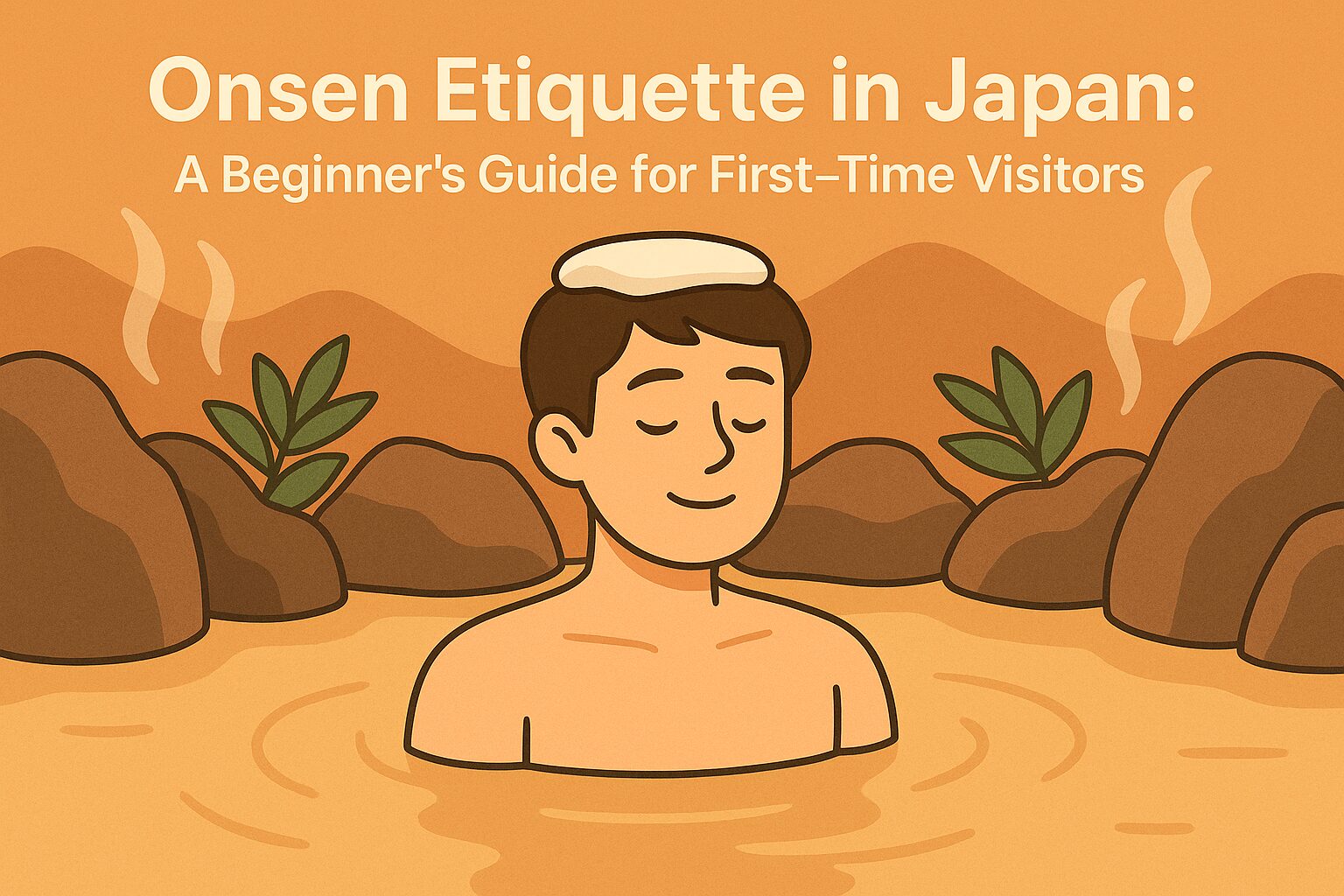👋Introduction
Japanese Onsen Etiquette is something every traveler should know before visiting Japan. In this guide, we’ll explain the essential rules, tips, and cultural customs so you can enjoy your first onsen with confidence.
Understanding Japanese Onsen Etiquette helps travelers avoid common mistakes and enjoy the experience without stress.
1.What Is an Onsen?
An onsen is a natural hot spring bath, heated by geothermal energy, and rich in minerals that are said to be good for your skin and health.
It’s different from a sento, which is a regular public bath using heated tap water.
Onsens are deeply tied to Japanese culture. Many are located in scenic mountain towns, surrounded by nature, and visiting one is often as much about relaxing in the atmosphere as soaking in the water.
2.Japanese Onsen Etiquette Basics (Before Entering)
- Wash Your Body First
- Before you enter the hot spring, head to the washing area. Sit on a stool, use the provided shower, soap, and shampoo, and wash thoroughly.
- Why? The bath is for soaking, not cleaning. Everyone shares the same water, so keeping it clean is a must.
- No Swimsuits Allowed
- Everyone goes in naked. This might feel strange at first, but it’s completely normal in Japan. Swimsuits aren’t allowed because onsens are seen as a place to relax naturally, without barriers.
- Mind Your Towel
- You’ll have a small towel, but don’t dip it in the bath. Most people place it on their head or the side of the bath. The water stays clean, and you avoid dripping soap or shampoo into it.
3.Special Rules & Cultural Points
- Tattoos:
Some onsens don’t allow tattoos due to old associations with gangs. If you have tattoos, look for tattoo-friendly spots (many lists and apps exist) or rent a private bath (kashikiri onsen). - Keep It Quiet:
Onsens are places for relaxation. Speak softly, don’t splash, and don’t swim—it’s not a pool. - Respect Others:
Simple things like rinsing off soap completely and not staring make everyone more comfortable.
4.What to Bring & What’s Provided
- Most onsens provide shampoo, conditioner, soap, and sometimes hair dryers.
- Bring your own towel if it’s not a hotel onsen (some places rent or sell them).
- A change of clothes for after your bath is also a good idea.
5.How to Choose the Right Onsen
- Outdoor vs. Indoor:
Outdoor baths (rotenburo) often have mountain or river views—perfect for photos and fresh air. Indoor baths tend to be hotter and quieter. - Private Onsens:
If you’re shy or traveling with a partner, many places offer private rooms or baths you can book by the hour. - Foreigner-Friendly Options:
Some onsens provide English signs, staff who speak basic English, and tattoo-friendly rules. Check websites or travel apps before visiting.
6.FAQ – Common Onsen Questions
Can you go to an onsen with tattoos?
Yes, if it’s tattoo-friendly or you book a private bath. Otherwise, cover small tattoos with a patch.
Do I need to be naked?
Yes, but once you try it, it feels surprisingly natural. Everyone’s there to relax, not judge.
Are children allowed?
Yes, in most places, but some have age limits for mixed-gender baths.
How much does it cost?
Typical entry fees are between 500–1,500 yen (about $4–12 USD), depending on the location and facilities.
🙌Conclusion
Japanese Onsen Etiquette may seem complicated at first, but once you try, you’ll see why hot springs are a highlight of any Japan trip. Follow the simple etiquette, relax in the steaming mineral water, and enjoy the mountain views—it’s an experience you’ll never forget.
Looking for more Japan travel tips? Check out our other guides on Japanese food, culture, and must-visit spots!
Related Reading
- How to Enjoy an Onsen (Hot Spring) Like a Local
- Kusatsu Onsen: Discover Japan’s Most Famous Hot Spring Town
- All About Japanese Sake: A Cultural Guide to Japan’s Traditional Drink
- For more details about hot spring culture, check the official Japan Travel guide.



コメント